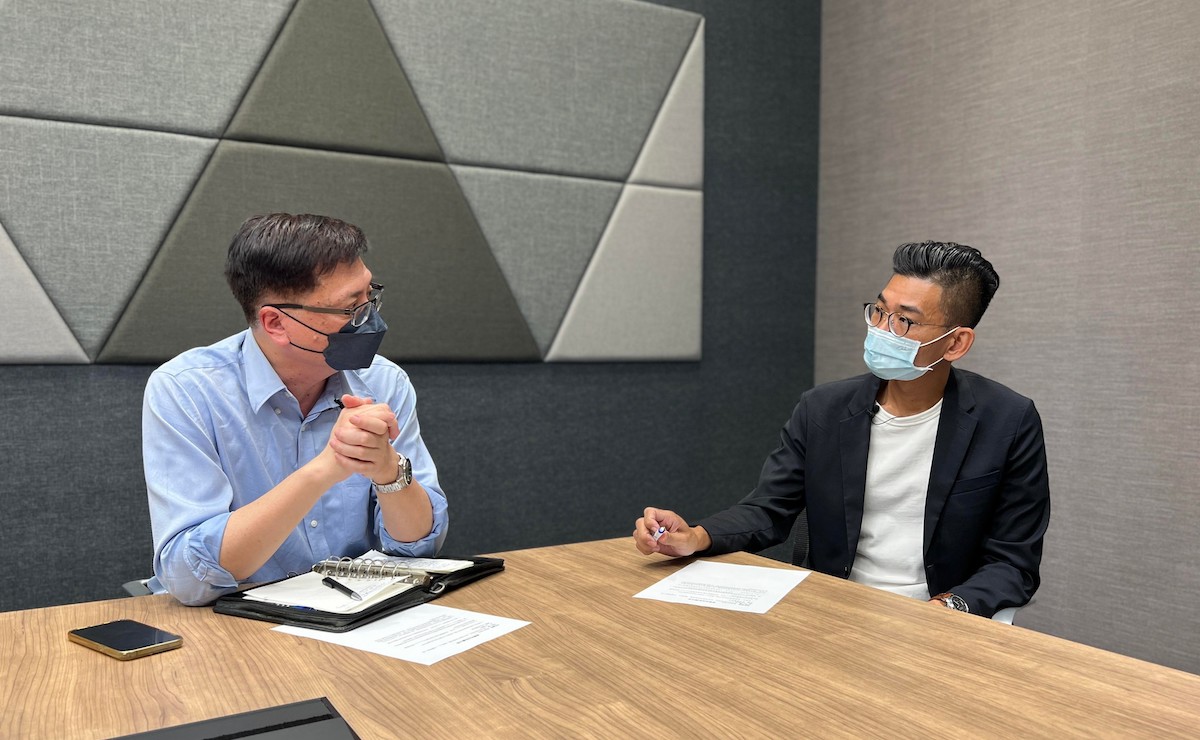Waymo and Baidu’s cloud computing is the mainstream of autonomous driving computing technology at this moment. However, as a major industrial computer manufacturer, ADLINK provides a solution for the crucial bottleneck of autonomous driving system by the edge computing technology that takes shorter time for the system to respond. In the afternoon of 25th July, the editors of Auto Future came to ADLINK, which is located in Hwa Ya Technology Park, Linkou, to visit Dr. Sheng-Shiung Hu, the product director, to discuss about how the company enters the territory of autonomous driving technology step by step…
 Dr. Sheng-Shiung Hu, the product director (right) and Jeff Lee, director of Auto Future (left).
Dr. Sheng-Shiung Hu, the product director (right) and Jeff Lee, director of Auto Future (left).
In 2015, ADLINK acquired a British software company – PrismTech. Based on this company’s technology of DDS (Data Distribution Service), ADLINK combines this IoT technology with edge computing to develop in the direction of the “Collective perception & then decision with global view” of Swarm Autonomy, that creates an all-new generation intelligent logistic model… This technology that had evolved from the last generation fixed-route AGV (Automated guided vehicle) to AMR (Autonomous Mobile Robot) is the core competitiveness of FARobot, which is established by Foxconn and ADLINK the year before, and it’s the prototype of fundamental theory of Vehicle-to-Vehicle, Vehicle-to-Traffic sign, or even Vehicle-to-pedestrian, that all the objects on roads can be connected and mutually communicate with real-time traffic information to avoid obstacles and facilitate the traffic flow. Two years ago, ADLINK cooperated with Japanese autonomous driving startup company – Tier IV and Chinese autonomous driving startup company – AutoCore on the development of open-sourced codes of autonomous driving technology platform - Autobare based on the ROS (Robot Operating System), which is provided by a global NPO – Autoware foundation for any demand of applications around the world. The codes of ROS platform had been downloaded for 17,000,000 times on average annually, which represents the massive demands and potential business opportunities of robots/autonomous driving technology utilized in various applications worldwide.
In addition. Dr. Hu expressed his opinion about the issues of the status quo of the development of autonomous driving technology proposed by me….
- The accountability on accidents of the application of level 3 autonomous driving technology is easily to cause controversy. The DMS (Driver Monitoring System) under development now can pre-warn drivers in advance to distinguish the grey area between human intervention and autonomous driving system in operation.
- Insurance companies in Japan has begun the study of related policy of the coverage of insurance after the accident happened to autonomous driving vehicles.
- Instead of setting up autonomous driving vehicles-only lanes in the future, more incentives for buying BEVs and BEVs priority lanes will be a better choice for future traffic planning; then we can switch BEV priority lanes to autonomous driving vehicles-only lanes when the BEVs market became mature. This is planned according to the chronological order of the development of automotive new technologies.
- Autonomous driving technology should be applied in confined and controllable scenarios (e.g., the Technology Park) first, then it can be gradually expanded to more complex scenarios. As for ICRL, ITRI’s autonomous driving bus sandbox program in Hsinchu that utilizes ADLINK’s industrial computer as the computing core will begin carrying people in fixed-route about the end of this year. When speaking of the ultimate application scenario – Robotaxi, due to its difficulty for the Corner Cases to cover every unexpected incident on roads in the system design phase, the timetable of fully-commercialization is still hard to be confirmed.
In addition to entering the world-famous autonomous driving platform – Autoware with its strong technology competitiveness of edge computing, ADLINK also cooperate with tech giants including Intel, Nvidia, Qualcomm, ARM, AWS, NXP, etc., … With the on-hand study of the design documents of Orin, the top autonomous driving AI chip of Nvidia, the co-development of EEA structure with ARM, or the focus on smart cockpit development with AUO and Qualcomm, ADLINK had already stepped into every territory of automotive new technologies and accumulated R&D energy to wait for the best timing to welcome huge business growth in the future.